- Register
- Log in to Tune-In
- Wishlist (0)
-
Shopping cart
(0)
You have no items in your shopping cart.
Beatles News

While fans eagerly await the arrival of their upcoming record, The Rolling Stones are already in a major creative swing. According to a new interview the band just took part in, the legendary rockers are hard at work on a follow-up, even before the world has heard their forthcoming set.
In a recent conversation with The New York Times NYT 0.0%, the band's frontman, Mick Jagger, hinted at the band's prolific future. The rocker assuaged worried fans by saying that he didn’t believe that their upcoming project, titled Hackney Diamonds, will be “the last Rolling Stones album.”
The singer and lyricist went on to state that “We’ve got almost three-quarters through the next one,” meaning they’re already nearing completing another album.
Jagger didn’t provide any further details about their next project, and there is no timeline for when fans might get to hear something from this album, or even when The Rolling Stones will be able to finish it.
Source: Hugh McIntyre/forbes.com
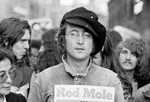
Devotees of The Beatles may soon have a chance to own an extraordinary piece of music history, though it’s going to cost them quite a bit of money.
Currently up for auction on Gotta Have Rock and Roll are a series of six tapes named The Beatles Derek Taylor Never-Before-Heard Collection of Lost Beatles Recordings, and they contain a treasure trove of songs, rehearsals and more that fans of the legendary rock band are sure to salivate over.
Tape number one includes unheard rehearsals for the Sgt. Pepper album, recorded from Kenwood in late '66 and early '67. The tape also features plenty of other odd recordings, including animal sounds the band used.
Source: Hugh McIntyre/forbes.com
details
For a moment in 1964, Cleveland became the center of Beatlemania.
Why it matters: The Fab Four's concert on Sept. 15, 1964, at Public Hall sparked two days of fan frenzy unlike anything Northeast Ohio had ever seen.
Flashback: Following their groundbreaking appearances on "The Ed Sullivan Show" in February 1964, John Lennon, Paul McCartney, George Harrison and Ringo Starr embarked on their first North American Tour that August.
Zoom in: The night before the Cleveland gig, fans broke through a police barricade outside the Sheraton Cleveland Hotel where The Beatles were staying.
Source: Troy Smith/axios.com
details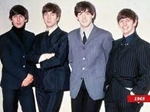
Fans of The Beatles could have some incredibly rare recordings in their collections ... if they have half a million to drop in an upcoming auction for the private tracks.
The big-ticket item is a collection of never-before-heard recordings from the iconic group, including band rehearsals at John Lennon's Kenwood home and even pieces of unreleased albums, all on 6 tapes. It's all expected to grab anywhere from $300,000 to $500,000.
The legendary tapes were obtained by a memorabilia collector named Phil from Charlotte, and he tells us he got the recordings 5 years ago from a man in India, who says he first secured them from Derek Taylor ... the group's former press officer who was often dubbed the "Fifth Beatle."We're told Phil listened through all of it only once, so he wouldn't damage the tapes, but there are a ton of Beatles gems throughout -- including rehearsals for Sgt. Pepper's Lonely Hearts Club Band, which has things like animal sounds for "Good Morning Good Morning" and even John and Paul McCartney complaining about the heat.
Source: tmz.com
details
Dulais Rhys, a professional musician and faculty member with the Amabile School of Music in San Francisco, will lead a discussion about the Beatles’ final album, “Abby Road,” at 7 p.m., Tuesday, Oct. 10 at the Livermore Civic Center Library, 1188 S. Livermore Ave.
The presentation is free and open to the public.
“Abby Road” was the iconic rock band’s 11th studio album. Released in 1969, it reached No. 1 on the pop charts in both England and the U.S.
Although the album was a commercial success, it initially received mixed reviews from the critics. Today, however, it is considered one of the Fab Four’s best albums. In particular, two songs written by George Harrison, “Something” and “Here Comes the Sun,” are considered among the best he ever wrote for the group.
The album cover, showing the group walking in step across the street outside Abby Road Studios in London, is one of the most recognizable and most often imitated covers in history.
Source: independentnews.com

After the early 1960s, John Lennon and Paul McCartney didn’t collaborate as closely when writing Beatles songs. Still, they gave each other their opinions and helped finish pieces. McCartney asked Lennon for help completing “Eleanor Rigby.” Lennon explained that he was hurt when his bandmate asked him to work on it.
Lennon agreed that “Eleanor Rigby” was one of McCartney’s more complex songs, but he said this was partly thanks to him.
“Ah, the first verse was his and the rest are basically mine,” Lennon said in the book All We Are Saying: The Last Major Interview With John Lennon and Yoko Ono. “But the way he did it … Well, he knew he had a song. But by that time he didn’t want to ask for my help, and we were sitting around with Mal Evans and Neil Aspinall, so he said to us, ‘Hey, you guys, finish up the lyrics.’”
Lennon understood that McCartney was really only asking him for help, so they began working on the song together.
Source: Emma McKee/cheatsheet.com

In 1968, a year after Brian Epstein set up Apple Corps – the umbrella company that would allow The Beatles to pay less tax than they would as individuals – drummer Ringo Starr set up his own venture.
Called ROR (short for 'Ringo or Robin', the latter being business partner and designer Robin Cruickshank) and run from the Apple offices on Saville Road, it was a company that made rather exclusive homeware. And in 1971, Ringo appeared on The BBC's flagship children's show Blue Peter to talk about their goods.
On the show, Starr took host John Noakes through some of ROR's catalogue: a stainless steel shelf set built around an eight-foot steel column with a removal occasional table/storage unit perched on top; a small chrome-plated storage box; a reversible perspex desk ornament filled with dangerous liquid mercury ("Perspex, I like as much as steel," explains Ringo), and a kinetic sculpture called 'Another One' (described in the original literature as a "mercury filled object containing zigzagging discs powered by a small motor which sits in the opaque light box underneath and all housed in a transparent perspex case”). IKEA, this was not.
Source: Fraser Lewry/loudersound.com
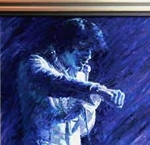
George Michael wrote an R&B song about John Lennon and Elvis Presley. The tune uses the deaths of John and Elvis to ask a question about God.
George Michael wrote an R&B song about John Lennon and Elvis Presley. The tune uses the deaths of John and Elvis to ask a question about God. While that might sound odd, it’s the inevitable result of the deification of the two rock stars.
While Michael is primarily known for the pop music he made in the 1980s and 1990s, “John and Elvis Are Dead” is a sultry R&B tune. It sounds more like Usher than The Beatles or the King of Rock ‘n’ Roll. In the tune, Michael asks “If Jesus Christ is alive, how come John and Elvis are dead?”
The tune is basically a variation on theodicy — the theological question of why God allows bad things to happen to good people. It’s interesting that Michael uses the deaths of John and Elvis as symbols of injustice. Thanks to songs such as “Imagine,” “Give Peace a Chance,” and “All You Need Is Love,” as well as his untimely death, John garnered a saintly image in pop culture. While Elvis wasn’t a peace activist like John, his sudden deat details

The end of The Beatles marked the end of an era. The enduring question – over 50 years after the event – persists: why did The Beatles split up? In reality, the breakup of The Beatles was multifaceted and complex: money problems, Brian Epstein’s death, John’s relationship with Yoko, not to mention creative divergences, internal power struggles, and the evolving artistic impulses of all four Beatles. Nonetheless, at the end of the day, the pivotal factor was John Lennon’s abrupt decision to quit the band.
In 1966, The Beatles finally decided to stop performing live after years of relentless touring. The plan was to focus on recording and the results were momentous. The release of ‘Sgt. Pepper’s Lonely Hearts Club Band’ (1967) changed the musical landscape forever and secured The Beatle’s status as counter-cultural icons.
However, Brian Epstein’s death in 1967 left the Beatles without their manager – a charismatic figure that handled their finances, and more importantly, their egos. Lennon, Harrison, and Ringo wanted the manager of the Rolling Stones, Allen Klein to take over, while Paul McCartney favored his soon-to-be wife Linda’s father to details

Though George Harrison was often left out of the songwriting dyad of Paul McCartney and John Lennon, he would write plenty of Beatles songs on his own. Throughout his time with The Beatles, Harrison wrote hundreds of songs, yet only a handful made the cut on several of the band’s albums.
Harrison penned Help! tracks “I Need You” and “You Like Me Too Much” and was relegated to singing some covers in between before his Rubber Soul contributions “Think For Yourself” and “If I Needed Someone.”
Later on, Harrison’s sweeping “While My Guitar Gently Weeps,” which featured his friend Eric Clapton, and the song “Piggies” made The White Album. Harrison wrote more with his most famous Abbey Road offerings “Something” and “Here Comes the Sun,” before “I’ll Be Me” and “For You Blue” on the third and final opus, Let It Be, in 1970.
Source: Tina Benitez-Eves/americansongwriter.com
details
Do Julian Lennon and his brother Sean Ono Lennon have something special up their sleeves?
Just like their late father John Lennon, both Julian and Sean have established themselves as successful musicians — and now, Julian is teasing the possibility that the two might team up to make music together at some point in the future.
“We’ve talked about it. We have a plan at some point, when we both have the time to do it,” Julian told Bill Maher on an episode of his Club Random podcast that will air on Monday. “Yes, there’s something we want to do together. We want to play around with an idea. I think it’s a nice idea. I have to wait and see. I’m not winding you up, but it’ll have its time and place.”
Julian, 60, didn’t offer any additional clues as what he and Sean, 47, might be conjuring up, but acknowledged that there was something special about the idea of them working together, as it’s “the whole sibling thing and how our voices should sound together and do sound together.”
Julian was born to Lennon and his first wife Cynthia, while Sean’s mom is the “Imagine” singer’s second wife, Yoko Ono.< details
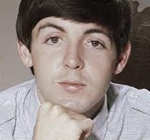
A teenager got to meet Paul McCartney after he heard her cover of The Beatles' "Blackbird." She discussed what she thought about meeting Paul.
If anything proves that music is the universal language, it’s the fact that The Beatles songs have been translated into so many dialects. A teenager covered The Beatles’ “Blackbird” in the Indigenous language Mi’kmaq to promote a social cause. Paul McCartney himself chimed in on the cover.
During a 2019 interview with the CBC Radio, singer Emma Stevens explained she hoped Paul would hear her cover of “Blackbird.” While the track is performed in an Indigenous dialect, its sparse folk arrangement is very faithful to the original “Blackbird” from The White Album.
Stevens’ teacher, Carter Chiasson, wanted the cover to draw attention to the Mi’kmaq language. Chiasson said his brother, Adam Chiasson, “emailed the right person and said the right things and all of a sudden we had an invitation” to see Paul in concert — and meet him before the show.
Source: Matthew Trzcinski/cheatsheet.com

The Beatles were an English rock band that formed in Liverpool in 1960. The band consisted of John Lennon, Paul McCartney, George Harrison, and Ringo Starr. Widely regarded as one of the most important and influential bands in the history of rock music, the Beatles are known for their innovative songwriting, complex harmonies, and catchy pop melodies.
The Beatles’ early music was heavily influenced by American rock and roll, but as they matured as songwriters, they began to incorporate a wide variety of styles, from Indian classical music to avant-garde experimentation. Their impact on popular culture and music is immeasurable, and their music has continued to inspire and influence generations of musicians.
The Beatles released a string of groundbreaking albums throughout the 1960s, including Rubber Soul, Revolver, Sgt. Pepper’s Lonely Hearts Club Band, and Abbey Road. They disbanded in 1970, but their music remains popular to this day, and their influence on popular culture has endured. The Beatles were inducted into the Rock and Roll Hall of Fame in 1988, and they continue to be recognized as one of the most important and influential bands in the history of popular music.
Source: Edward Tom details

Paul McCartney has put together a marvelous solo career, with most of the output coming from 1980 forward. Before that, he was in a pair of bands, the first of which he joined, the second of which he formed. Those two bands, of course, are the Beatles and Wings. The Beatles were recognized by many as the greatest rock band of their time and beyond, while Wings had to deal with critical pot shots for much of their existence. Macca later went on to try his hand at experimental music with The Fireman, as well. Let’s take a look at these three groups and how they compare.
3. The Fireman
Is it possible there’s a band including Paul McCartney that even some diehard rock fans don’t know? It could be, because The Fireman is technically only a duo: McCartney and Martin Glover, the British musician and producer known by the stage name of Flood. It could also be because McCartney and Flood don’t do a lot of publicizing of their albums, of which there have been three as of this writing (the last was Electric Arguments from 2008).
Source: Jim Beviglia/americansongwriter.com
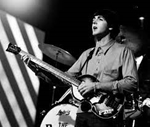
Paul McCartney didn't initially want strings on 'Eleanor Rigby.' When he agreed to it, the string musicians resented his vision. Here's why.
When George Martin told Paul McCartney that they should add a double string quartet to “Eleanor Rigby,” he was wary. He didn’t necessarily want that type of sound. Eventually, though, he agreed, so long as they followed his vision for the song. This particular vision horrified the string musicians. A Beatles audio engineer shared how they reacted and how they finally achieved the finished product.
McCartney initially played “Eleanor Rigby” on the acoustic guitar. When producer George Martin suggested they get a double string quartet, McCartney hesitantly agreed. He insisted that they achieve a “really biting” sound with the strings, though. This request meant that audio engineer Geoff Emerick had to get creative in the studio.
Source: Emma McKee/cheatsheet.com
details